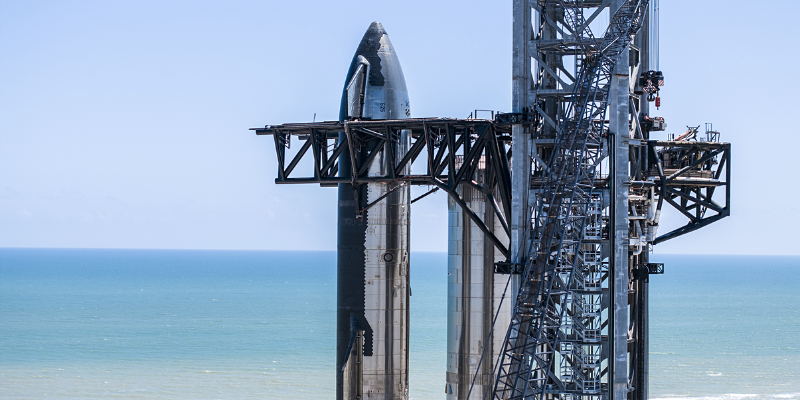
Source: Space.com
SpaceX’s giant Starship rocket is ready for its second-ever test flight.
SpaceX stacked its latest Starship vehicle on Tuesday, lifting the Ship 25 upper-stage prototype onto the Booster 9 “Super Heavy” first stage at the company’s Starbase site in South Texas.
The work represents a major milestone ahead of an impending test flight, which SpaceX founder and CEO Elon Musk says can happen whenever the required regulatory boxes get checked.
“Starship is ready to launch, awaiting FAA [Federal Aviation Administration] license approval,” Musk wrote Tuesday in a post on X (formerly known as Twitter) that included a 40-second video capturing highlights of the stacking process.
Starship, the biggest and most powerful rocket ever built, is still in development. SpaceX envisions the fully reusable vehicle eventually taking over pretty much all of its spaceflight duties, from launching satellites to Earth orbit to sending people to the moon and Mars.
A fully stacked Starship has flown just once to date — in April of this year, on a test flight from Starbase that aimed to send the upper stage partway around Earth, with a planned splashdown in the Pacific Ocean near Hawaii.
That vehicle suffered several problems shortly after launch, however, including the failure of its first and second stages to separate. As a result, SpaceX beamed up a self-destruct command, detonating the craft high above the Gulf of Mexico four minutes after liftoff.
SpaceX has made a number of changes to this second Starship vehicle. Perhaps the most prominent is the switch to a “hot staging” strategy, in which the upper stage lights its engines before it has fully separated from the first-stage booster. That switch required modifications to Booster 9, including the installation of a heat shield and a “vented interstage” to protect it from Ship 25’s fire.
SpaceX has been gearing up for the second flight, whose goals will be similar to those of the first, for a while now. For example, the company has performed two “static fires” with Booster 9, briefly igniting the vehicle’s Raptor engines while it remained anchored to Starbase’s orbital launch mount.
Those two tests occurred on Aug. 6 and Aug. 25. The second one was a marked improvement; all 33 of Booster 9’s Raptors lit up, compared to 29 during the first static fire, according to SpaceX.
But there’s more to Starship’s flight readiness than technical progress, as Musk noted in his social media post: The FAA still hasn’t granted a launch license for this second liftoff.
The agency is still reviewing the mishap report that SpaceX filed about the April 20 flight, which damaged Starbase’s orbital launch mount and sent dirt, chunks of concrete and other debris raining down on the area around the site.
Source: Space.com






